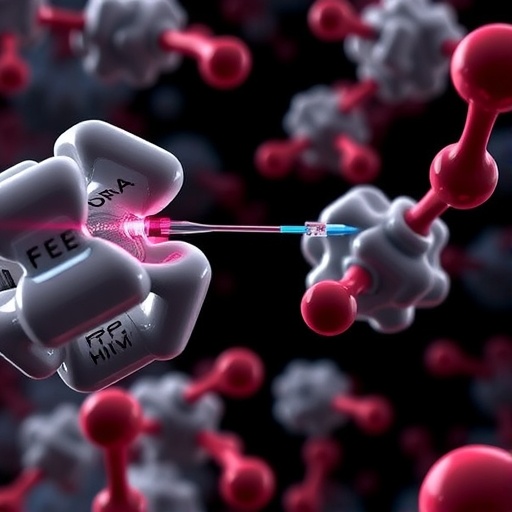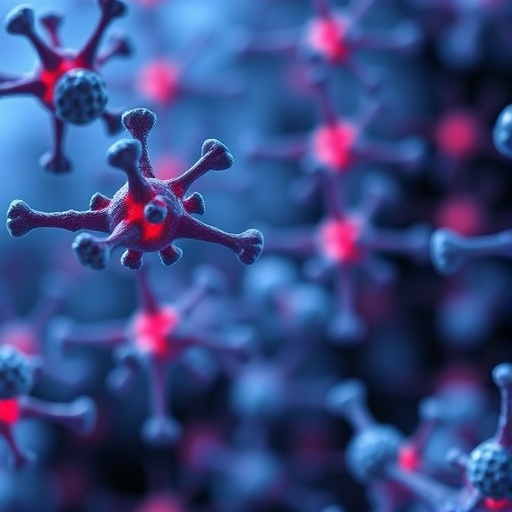In a groundbreaking advancement in the fight against HIV-1, a recent phase 1 clinical trial has unveiled that an enveloped trimer vaccine induces sex-associated differences in antibody responses. This discovery, published in Nature Communications, not only marks a pivotal step in HIV vaccine research but also uncovers the profound influence of biological sex on immune responses. Researchers led by Reiss, van der Straten, Graus, and colleagues meticulously investigated how men and women respond differently to a vaccine targeting the HIV-1 envelope glycoprotein trimer, opening new avenues for personalized vaccine design.
The HIV-1 virus envelope is notoriously complex, with its trimeric glycoprotein structure playing a crucial role in viral entry into host cells. This structural complexity has long presented challenges for vaccine developers aiming to elicit potent and broad neutralizing antibody responses. The trial utilized an engineered stabilized HIV-1 envelope trimer immunogen designed to mimic the native viral spike, aiming to prime the human immune system to recognize and neutralize the virus effectively. The approach represents a refined strategy aimed at overcoming previous obstacles associated with less native-like vaccine constructs.
The study enrolled healthy adult volunteers who were administered the envelope trimer vaccine in multiple doses, with subsequent blood samples collected to evaluate humoral immune responses. The investigators employed advanced immunological assays to quantify neutralizing antibodies, binding antibody levels, and other immunoprotective markers, alongside comprehensive immunophenotyping and systems serology analyses. This high-resolution approach allowed them to discern subtle yet significant differences between the sexes in terms of the immune response elicited by the vaccine.
Analysis of the clinical trial data revealed that female participants generated significantly higher titers of binding antibodies compared to their male counterparts. These antibodies target specific epitopes on the HIV-1 envelope that are critical for viral infection, suggesting that women’s immune systems may mount a more vigorous initial response to this vaccine platform. Furthermore, the quality of antibody responses, including affinity maturation and subclass distribution, also displayed sex-dependent variation, underscoring the complex interplay between sex hormones and immune function.
Interestingly, while females demonstrated elevated quantities of binding antibodies, males exhibited a distinct profile characterized by a more diversified antibody repertoire. This repertoire diversity alludes to a different mechanism of immune engagement, possibly reflecting intrinsic sex-based differences in B cell development and activation. Such findings suggest that personalized vaccine strategies accounting for sex differences could optimize protective efficacy, a paradigm shift away from one-size-fits-all vaccine approaches.
The mechanistic basis behind these sex-associated immunological discrepancies is thought to involve hormonal modulation, genetic differences on sex chromosomes, and divergent patterns of immune regulation. Estrogen and progesterone in females have been documented to enhance antibody production and influence immune cell signaling pathways, while testosterone in males may suppress certain immune functions. These factors collectively shape the nuanced immune landscapes observed post-vaccination, providing a biological blueprint for precision immunotherapy.
Beyond antibody quantification, the research team also evaluated T-cell responses, which are vital for viral clearance and long-term immunity. While differences were less pronounced compared to humoral responses, subtle sex-based disparities in CD4+ and CD8+ T-lymphocyte activation and cytokine secretion profiles were identified. These findings provide a more holistic understanding of how the human immune system orchestrates its defense mechanisms in a sex-specific manner after HIV vaccination.
The findings from this phase 1 trial resonate profoundly in the broader context of HIV vaccine development. HIV remains a global public health crisis with millions affected worldwide, and despite decades of research, an effective vaccine remains elusive. By highlighting the immunological variability linked to sex, the study paves the way for more nuanced clinical trial designs and vaccine formulations that enhance efficacy across diverse demographic groups.
Furthermore, the study underscores the need to integrate sex as a critical biological variable in immunological research broadly. Historically, many vaccine trials have neglected sex-based analyses, potentially obscuring important differential outcomes that could inform better healthcare strategies. This trial provides compelling evidence that vaccine responses cannot be fully understood without considering sex differences, pushing for systematic inclusion of such analyses in future clinical investigations.
Another notable implication is the potential to tailor vaccine dosing schedules and adjuvant formulations based on sex-specific immune kinetics. For instance, females might benefit from adjusted dosing to prevent potential overstimulation or adverse effects linked to stronger antibody responses, while males may require enhanced immunostimulatory platforms to achieve comparable protective immunity. Such tailored immunization protocols would represent a significant leap toward personalized medicine in vaccinology.
The detailed molecular characterization of antibody responses in this trial also offers insights into the design of immunogens that can better engage B cell receptors prevalent in one sex versus another. By manipulating immunogen structure and presentation, vaccine developers could steer immune responses towards broadly neutralizing antibodies more effectively, a long-sought goal in HIV vaccine research. Structural vaccinology combined with sex-specific immunological profiling thus emerges as a promising frontier.
Moreover, this research sets a precedent for examining other infectious diseases where sex differences in immunity have been observed but remain poorly understood. Diseases such as influenza, COVID-19, and autoimmune disorders all manifest varying outcomes between males and females, suggesting that vaccine development across the board could benefit from the lessons learned in this HIV-1 envelope trimer vaccine trial.
The trial’s rigorous methodology, including longitudinal sampling, multi-parametric immune profiling, and standardized immunogen production, ensures that its findings stand on solid scientific ground. While the study is limited to a phase 1 clinical trial population and thus primarily assesses safety and immunogenicity, its insights are invaluable for advancing to larger, efficacy-focused trials that incorporate sex as a stratifying factor.
Looking ahead, the research team advocates for larger cohort studies that not only confirm these initial observations but also explore the underlying molecular mechanisms in greater depth. Integration with multi-omics technologies such as transcriptomics, proteomics, and metabolomics could further elucidate the pathways by which sex modulates vaccine-induced immunity, unlocking new therapeutic targets and enhancing vaccine precision.
In summary, the phase 1 clinical trial of the HIV-1 envelope trimer vaccine has illuminated a previously underappreciated dimension of vaccine immunology—the profound impact of biological sex on antibody responses. This revelation heralds a new era of personalized vaccinology where sex-specific immune dynamics are harnessed to design safer, more potent vaccines not only against HIV but possibly other infectious diseases. As vaccine science continues its rapid evolution, the integration of sex-based analyses promises to maximize public health benefits on a global scale.
Subject of Research: HIV-1 vaccine immunology and sex-associated differences in immune responses.
Article Title: HIV-1 envelope trimer vaccine induces sex-associated differences in antibody responses: a phase 1 clinical trial.
Article References:
Reiss, E.I.M.M., van der Straten, K., Graus, L.T.M. et al. HIV-1 envelope trimer vaccine induces sex-associated differences in antibody responses: a phase 1 clinical trial. Nat Commun 16, 10250 (2025). https://doi.org/10.1038/s41467-025-65101-7
Image Credits: AI Generated
DOI: https://doi.org/10.1038/s41467-025-65101-7
Tags: advancements in HIV researchantibody response variability by sexcomplex viral structure challengesengineered immunogen for HIVHIV envelope glycoprotein trimerHIV-1 vaccine developmentimmune system priming against HIVNature Communications publication on HIV vaccineneutralizing antibody inductionpersonalized vaccine design strategiesphase 1 clinical trial findingssex-based immune response differences





